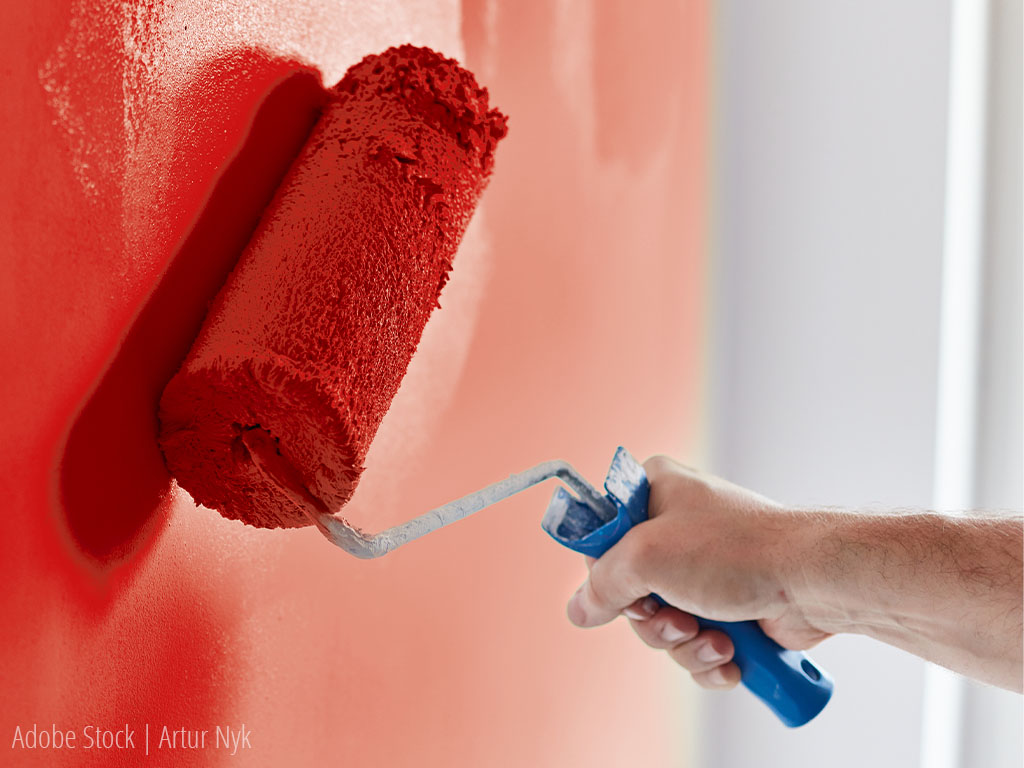
Painting walls: How to add colour to your home!
Find out here what you should pay attention to when painting and which appliances can help you.
Do you want to benefit from all
Einhell advantages?
A new coat of paint for the wall, a fresh finish for your wooden fence, or mortar for a new wall? A suitable mixer will help you mix the respective material. Depending on the setup, you can use it either with a paint/mortar mixer or directly with your cordless screwdriver or drill. Depending on the type of mixer, they are better suited for viscous, sticky materials like mortar and plaster or for more fluid materials like paint or varnish. In our range, you will find the right stirring tool for every application.
Paint mixers are specifically designed for blending low-viscosity materials such as paints, glazes, primers, and resins. They feature a design that ensures splash-free and homogeneous mixing. By minimizing air bubbles, they create a smooth, even mixture, which is particularly beneficial for high-quality surface applications. Their robust stirrer construction ensures a long service life. Easy handling and compatibility with various machines make them ideal for mixing tasks. They are available in different lengths and diameters to meet every requirement. Thanks to their 8 mm HEX fitting, they are perfectly suited for use with cordless screwdrivers and drills.


Paint stirrers are ideal for mixing liquid and semi-viscous materials such as wall paints, dispersions, wallpaper paste, or light filler compounds. They are designed to ensure uniform mixing without air inclusions. Paint stirrers are available in two variants: with an 8 mm HEX fitting for use with cordless screwdrivers and drills, or with an M14 fitting, specifically designed for Einhell paint/mortar mixers. This flexibility allows for use in various work environments and ensures that even larger quantities can be mixed reliably and efficiently.
Mortar mixers are specifically designed for mixing heavy and viscous materials such as mortar, concrete, tile adhesive, plaster, or render. They are extremely robust to ensure efficient material movement even under high loads. Mortar mixers are compatible with paint/mortar mixers featuring M14 and HEX fittings. This ensures a secure hold of the mixing paddle in the tool, allowing it to withstand demanding mixing tasks. The range also includes practical sets, such as a 2-piece set consisting of a paint stirrer and a mortar mixer. For larger projects, there is a twin mixer set, specially designed for uniform and fast mixing of up to 140 litres of mortar. These sets and mixers provide the right solution for every need, whether on construction sites or in DIY projects.

Here, you’ll learn everything you need to know about accessories for your cordless screwdriver, drill, or paint/mortar mixer. This will help you make the right choice to optimally mix your desired material.
Paint and mortar mixers differ in their design, application areas, and construction. Paint mixers are designed for liquid to slightly viscous materials such as wall paints, dispersions, or wallpaper paste. They feature a lighter construction and stirrers that ensure uniform mixing without air bubbles. They operate at higher speeds because the resistance is lower. Mortar mixers, on the other hand, are built for heavy, viscous materials like mortar, concrete, or plaster. They are robust and more powerful to withstand high loads. These mixers are larger and specifically shaped thoroughly to move the material and prevent clumping. Mortar mixers work at lower speeds but with high torque to efficiently mix dense building materials and heavy mixtures.

| Liquid | Dynamic Viscosity (mPa·s) |
|---|---|
| Water | 1 |
| Olive Oil | 100 |
| Glycerin | 1.000 |
| Honey | 10.000 - 50.000 |
| Tar | 100.000 |
Viscosity describes the thickness of a liquid and indicates how strongly it resists flowing or deforming. The higher the viscosity, the thicker the liquid (e.g., honey), while liquids with low viscosity (e.g., water) flow more easily. This value is crucial for the proper handling of liquids, such as mixing, pumping, or applying them. Certain factors, such as temperature or composition, influence viscosity. As temperature increases, the viscosity of liquids typically decreases, whereas the viscosity of gases increases.
Mixers come in many forms, as their design significantly influences how materials are moved, mixed, and processed. Propeller paddles create a vertical flow, making them ideal for liquid materials like paints. Wing paddles ensure even mixing of viscous substances like wall paints and prevent air bubbles. Spiral mixers minimize bubble formation and are suitable for varnishes and fine coatings. Double helix paddles are efficient for heavy materials, while mixers with smooth surfaces reduce sticking and are easy to clean. Each shape is precisely tailored to meet specific requirements.


Find out here what you should pay attention to when painting and which appliances can help you.

For planting or fence-building – Discover the advantages of the cordless earth auger!